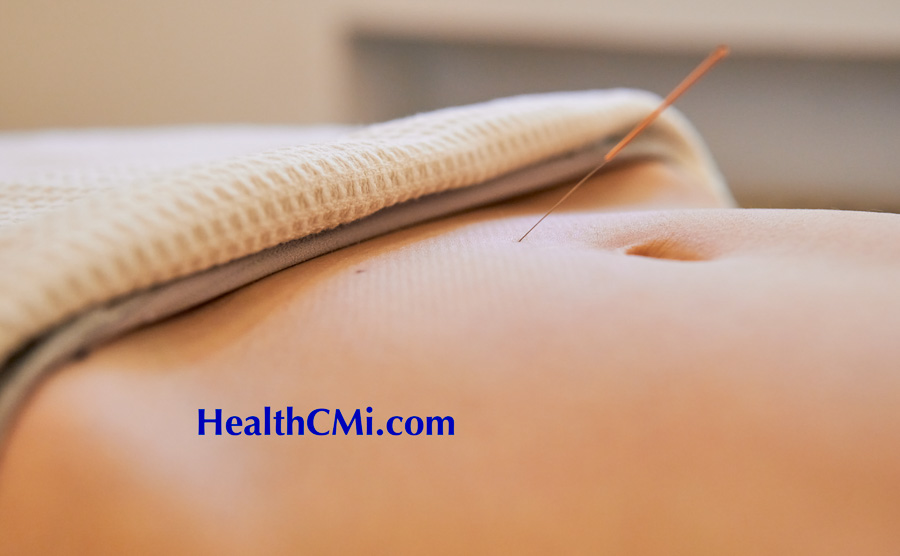
Researchers have tested and confirmed an effective acupuncture treatment for patients with functional dyspepsia (chronic upset stomach). Functional dyspepsia is characterized by a recurring upset stomach of unknown or unspecified cause. It is non-ulcerative; however, it mimics ulcerative stomach disorders. There is recurring upper abdominal pain or discomfort, often with bloating, nausea, or belching. There may be postprandial fullness or early satiation, without a clear structural cause.
Lao shi zhen (old ten needles) is an acupuncture prescription derived from the expertise of Chinese medicine physician Wang Le-ting. This investigation compared the efficacy of lao shi zhen with that lao shi zhen plus the addition of Si Shen Cong (EX-HN1). The results demonstrate that the combination of acupoints improves outcomes. [1]
Research indicates a close relationship between sleep quality and functional dyspepsia (FD). Sleep disturbances often trigger or correlate to pathological gastrointestinal disturbances that contribute to the development of FD.
The lao shi zhen procedure functions to regulate qi and harmonize the stomach. Si Shen Cong (EX-HN1) is an extra-meridian acupoint commonly used to calm the mind and treat insomnia. The research team cites studies demonstrating that Si Shen Cong extends the duration of slow-wave sleep, REM sleep, and total sleep times. According to the data, Si Shen Cong optimizes sleep architecture and restores normal sleep rhythms. Based on this information, the researchers tested the combination of lao shi zhen with Si Shen Cong.
Patients
The study comprised 62 patients diagnosed with spleen and stomach deficiency type functional dyspepsia (FD) accompanied by insomnia. All participants were treated at the acupuncture department and the spleen-stomach department of the Third People's Hospital affiliated with Fujian University of Traditional Chinese medicine. Using a random number table method, patients were randomly divided into two groups, the control group and the observation group, each consisting of 31 patients. During the treatment period, one patient from each group withdrew from the study.
Acupuncture Protocols
The control group was treated with the lao shi zhen acupuncture treatment. The acupoints selected were a combination of unilateral and bilateral acupoints adding up to ten acupoints total:
- CV12 (Zhongwan)
- CV13 (Shangwan)
- CV10 (Xiawan)
- CV6 (Qihai)
- ST 25 (Tianshu)
- PC6 (Neiguan)
- ST36 (Zusanli)
For bilateral PC6, a 1-inch acupuncture needle (0.35 × 25 mm) was inserted perpendicularly to a depth of 0.5–0.8 inches. For CV12, CV13, CV10, CV6, bilateral ST25, and bilateral ST36, a 1.5-inch acupuncture needle (0.35 × 40 mm) was used, inserted to a depth of 1–1.2 inches.
The observation group received Si Shen Cong acupoints in addition to lao shi zhen acupuncture. A 0.35 ×25 mm acupuncture needle was inserted at a 10–25 degree angle to the scalp (in line with the galea capitis, insertion depth 0.8–1 inches). High-frequency twisting (200 rotations/min) was used for manual stimulation of the acupoints.
Each acupoint received even reinforcing-reducing manipulation for both groups. After achieving deqi, the needles were retained for 30 minutes. The treatments for both groups occurred once a day, five days a week, over two weeks.
Outcomes
After the treatment, compared with the pretreatment condition, both patient groups showed significant reductions in the scores for postprandial fullness, early satiety, epigastric pain, and epigastric burning sensation symptoms, as well as improvements in the Pittsburgh Sleep Quality Index (PSQI) scores. When comparing the outcomes between the observation and control groups, the observation group showed a more pronounced improvement in scores for postprandial fullness, early satiety, epigastric pain, and PSQI after the treatment. The total effective rate of the observation group reached 96.7%, which was significantly better than the 76.7% in the control group. The results indicate that the addition of Shi Shen Cong to the lao shi zhen acupuncture treatment improves patient outcomes.
Reference:
[1] Lin Ling, Dai Rongshui, Luo Caiyun, Lin Jie, Yu Xiaowen & Hu Wei. (2022). Acupuncture "Lao Shi Needle" combined with Sishen Cong in the treatment of 30 cases of functional dyspepsia accompanied by insomnia due to spleen and stomach weakness. Fujian Traditional Chinese Medicine (12), 10–11,14.


